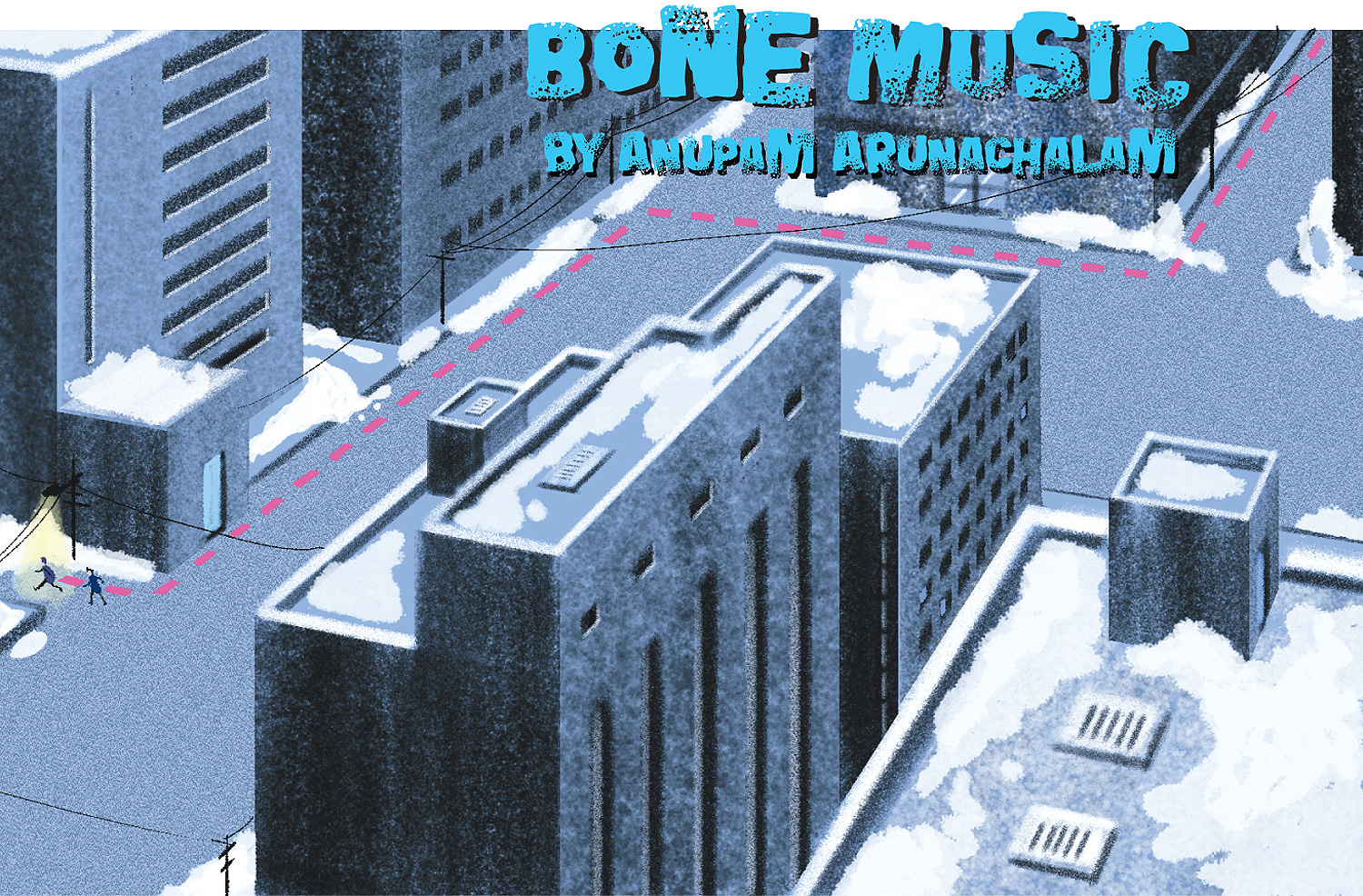
Vol 2 Issue 2 | July-Sept 2022
Bone Music
Story and art by Anupam Arunachalam
Cultural repression in the USSR
Because much of our view of the Communist USSR comes from western sources, largely American, there’s a lot of US propaganda that obscures the real picture of Cold War Soviet Russia. But in Stalinist times (1930s to early 1960s), there were certainly many restrictions on what cultural material from the US and countries of western Europe the people of the USSR had access to.
This was the era of what is known as socialist realism, where all art and culture was decreed as having to be created for the promotion of Soviet ideals. Those whose creations were deemed to not meet this goal were severely dealt with. A large number of writers and artists were imprisoned and died in prison camps, or were outright killed by the authorities.
Music too was severely constrained, with even the music of several famous classical composers such as Dmitri Shostakovich, Sergei Prokofiev and Aram Khachaturian coming under the scanner several times. Music from the West was considered decadent and banned for decades.
https://courses.lumenlearning.com/suny-hccc-worldhistory2/chapter/culture-of-the-soviet-union/
Bone music
One of the ways that rebellious Russians got around the music ban was by creating what came to be known as bone music. They devised ways to use old X-ray film as a substrate upon which to cut discs that could be played on record players.
https://www.x-rayaudio.com/x-rayaudioblog/2020/4/14/the-strange-art-of-lathe-recording
St Petersburg, or Leningrad as it was known during that period, was always Russia’s major cultural centre, and as such the business of bootleg music flourished there. Bootleggers generally got their western records from Russian or foreign sailors in the port, and then reproduced these using the bone music techniques they had developed.
https://www.x-rayaudio.com/x-rayaudioblog/2015/1/14/bowlly-on-bone
A lot of valuable information on bone music is available on this deeply researched site, and in the associated documentary film:
This is another page with a wonderful article on the subject, and links out to other material:
https://www.vice.com/en/article/rq4k85/soviet-x-ray-audio
Ruslan Bogoslovsky
Ruslan Bogoslovsky was one of the founders of The Golden Dog Gang, the best-known of the Leningrad x-ray music bootleggers. Fellow bootlegger Rudy Fuchs described him as the “hero of Soviet underground record production”, whilst his partner in crime Boris Taigin called him “the man who laid the first stone in the foundation of our musical freedom”.
Bogoslovsky was technically ingenious, and built some of the first-jury rigged recording lathes. He was known for producing high-quality bone discs, and even shellac-based bootlegs, but he was not good at avoiding the authorities, He served three prison sentences for bootlegging-related activities in the 1950s and early ‘60s.
https://www.x-rayaudio.com/x-rayaudioblog/2021/9/21/ruslan-bogaslovskys-criminal-record

